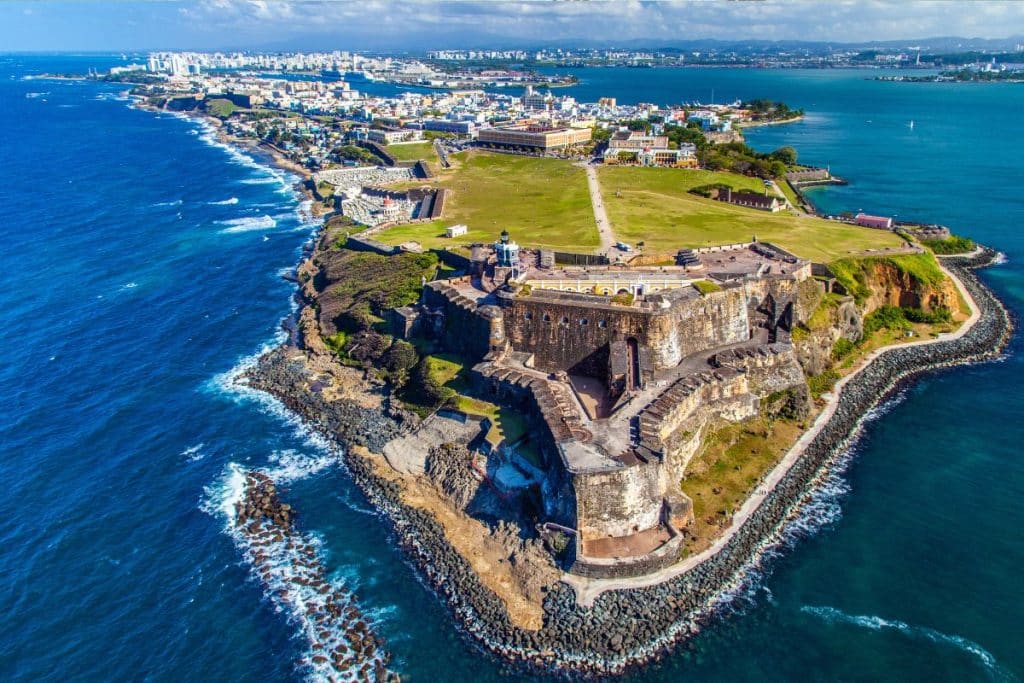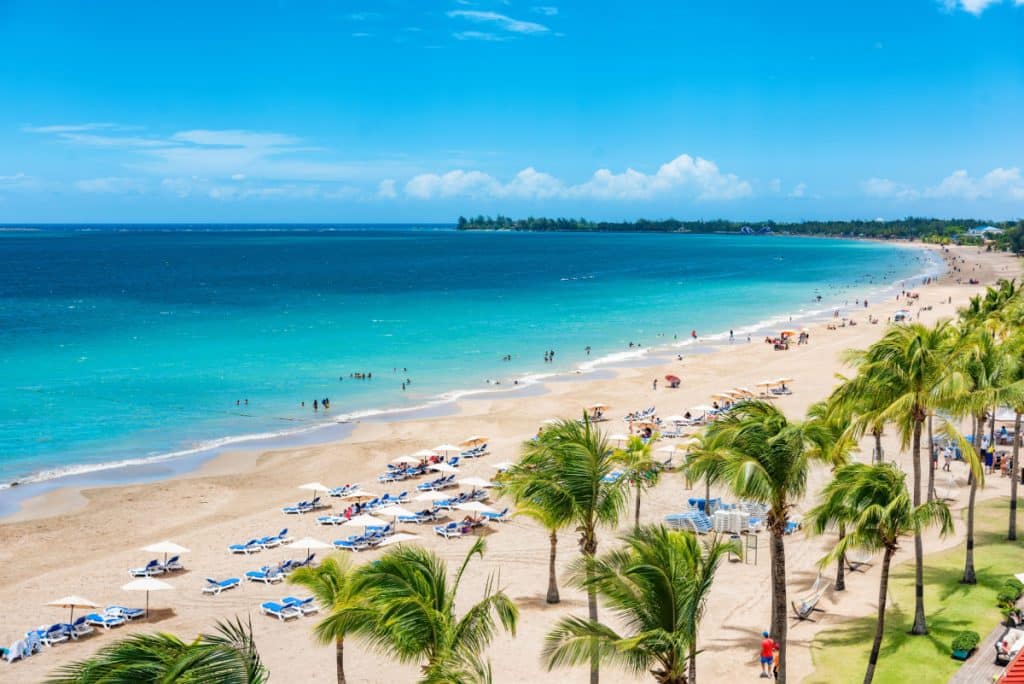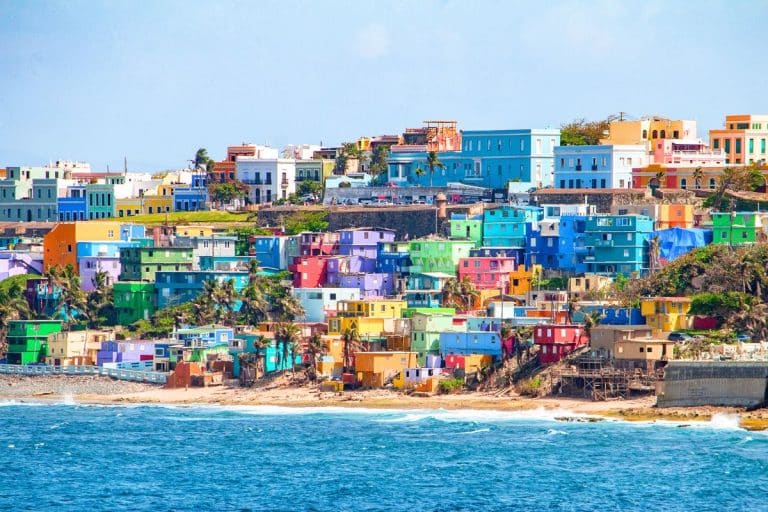If you want to visit a tropical paradise, consider Puerto Rico.
We have everything: the beaches, the tropical rainforest, the 500-year-old colonial city, museums, bio bays, caves, underwater rivers, and tropical cuisine.
Although Puerto Rico is a destination you can visit all year round, there are some activities you can enjoy better in the summertime.
I am a local Puerto Rican, and I’ve been guiding tourists in Puerto Rico for decades.
Let me share with you 7 reasons why you should visit Puerto Rico in the summer:
Puerto Rico’s beaches have their best conditions in the summer

In summer, the water of the Atlantic Ocean and the Caribbean Sea gets warmer.
The slight increase in sea temperature drives jellyfish away and also makes the water clearer.
The Surfing season in Puerto Rico goes from November to March. From May to September in the summertime, you will find calm beaches perfect for swimming, snorkeling, kayaking, sailing, paddle boarding, or just for beating the summer’s heat.
Also, you will get a better tan on the beach in the summer.
Local Tip: “Wear sunblock, Puerto Rico’s summer sun is intense”.
El Yunque in the summertime

El Yunque is the only tropical rainforest under the US National Forest System.
You can hike up the mountain, watch the waterfalls and creeks and get in the cold refreshing water of El Yunque.
Although you can visit El Yunque year round and have a great time, in summer it rains a lot more in El Yunque.
You will find greener foliage, fuller waterfalls, and colder streams when you visit El Yunque in the summer.
According to The US Forest Service and the US Department of Agriculture (USDA), there are 97 species of birds at El Yunque.
Almost half (45) of those bird species are migratory and come to El Yunque in the summer.
Cueva de Las Golondrinas
You will find the town of Isabela on Puerto Rico’s northwest tip.
Isabela is a beautiful small town with great beaches, dunes, and a forest with a cave named La Cueva de Los Vientos (The Cave of the Winds).
There are a lot of fun things to do year-round in Isabela, but in the summertime, a rare phenomenon occurs.
The north shore tide of Puerto Rico recedes in the summertime.
When the tide moves back, you can get into La Cueva de Las Golondrinas (The Swallows Cave).
To get to the cave, you must walk from the Pastillo beach to a rock formation resembling the Face a Taino Chief Mabodomaca. There is a legend about the Taino Indian Chief or La Cara del Indio
Trust me, getting in that cave that remains covered by water most of the year is worth the two-hour drive from San Juan.
Taste The Ceti
July marks the beginning of Ceti’s migration.
The native fish species Sycidium Plumieri has an interesting life cycle, including both fresh and saltwater phases.
Adults reside and spawn in pools on the upper parts of rivers.
The larvae drift downstream into the ocean, staying there until they develop into the post-larvae phase we call “cetí”.
Schools of cetí look for a source of fresh water and proceed to migrate upstream during the last quarter moon face starting in June.
Fishermen catch the ceti, and people cook it.
You can only find ceti in the town of Arecibo.
The post larvae ceti is not great looking, but you are going to love how they taste.
Local Tip: “Try the Pasteles de Ceti”. What we Puerto Ricans call pastel is similar to the Mexican tamal, but made with green bananas, yucca (cassava), or yautia (yam).
La Virgen Del Carmen Day
Historically speaking, Spain ruled Puerto Rico for almost 500 years.
Although we have been a US territory since 1917 we still speak Spanish and the influence of Spain lingers in our culture, cuisine, and religion.
You will find Catholic churches in all of Puerto Rico’s town squares.
Fishermen have their Patron, La Virgen del Carmen (Our Lady of Mount Carmel).
You can see the statue of Our Lady of Mount Carmel in all of Puerto Rico’s fisherman villages (Villas Pequeras)
Every 16 of July, hundreds of fishermen take the statue of the Virgin and sail with her thanking the Our Lady for protecting them.
Seeing dozens of fishing boats in the water paying homage to Our Lady of Mount Carmel is something you will remember for years to come.
Old San Juan

This is how the US Parks official webpage describes Old San Juan:
“San Juan Puerto Rico is the oldest continuously inhabited post-European contact city in United States territory and the second oldest in the entire Western Hemisphere. Since the Spanish founded it in 1519, San Juan has served as the capital city of Puerto Rico.”
Walking the cobblestone streets, and seeing the colorful houses and historic buildings is a great experience all year long, but there is something almost magical in the walled city in the summer.
The sun shines brighter, the ocean breeze blows stronger and the air is crisper.
Old San Juan gets hotter in the summer but don’t you worry, you have a valid excuse to visit Barrachina, the birthplace of the Pina Colada drink, and beat the heat with our national cocktail.
Beach Holidays

As I wrote before, Puerto Rico was a colony of Spain for over 400 years and has been an incorporated US Territory since 1917.
We Puerto Ricans love our beaches and we love holidays.
There are two holidays that we go to the beach by the thousands;
June 23rd, of Saint John Baptist’s Day, and July 4, the United States Independence Day.
On June 23rd we spend the night at the beach and precisely at midnight we get in the water and mimic a baptism. That is an old tradition that we still follow today.
On July 4th you will see our share of fireworks, but we spend the day at the beach.
One last thing, summertime in Puerto Rico is a slow-paced season, kids are not in school and some people go on summer vacation. Visit us in the summertime to get that vacation vibe.
Here you can find more information about things to do in Puerto Rico on Puertorico.com.

